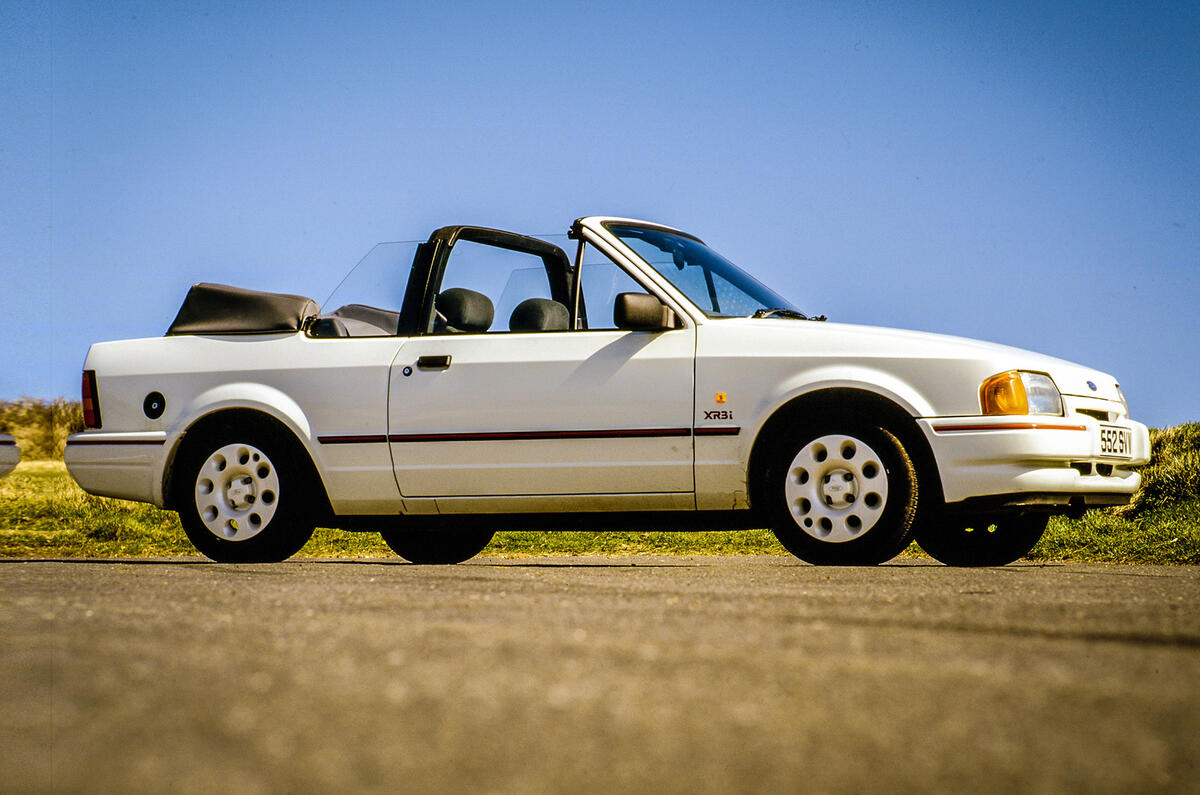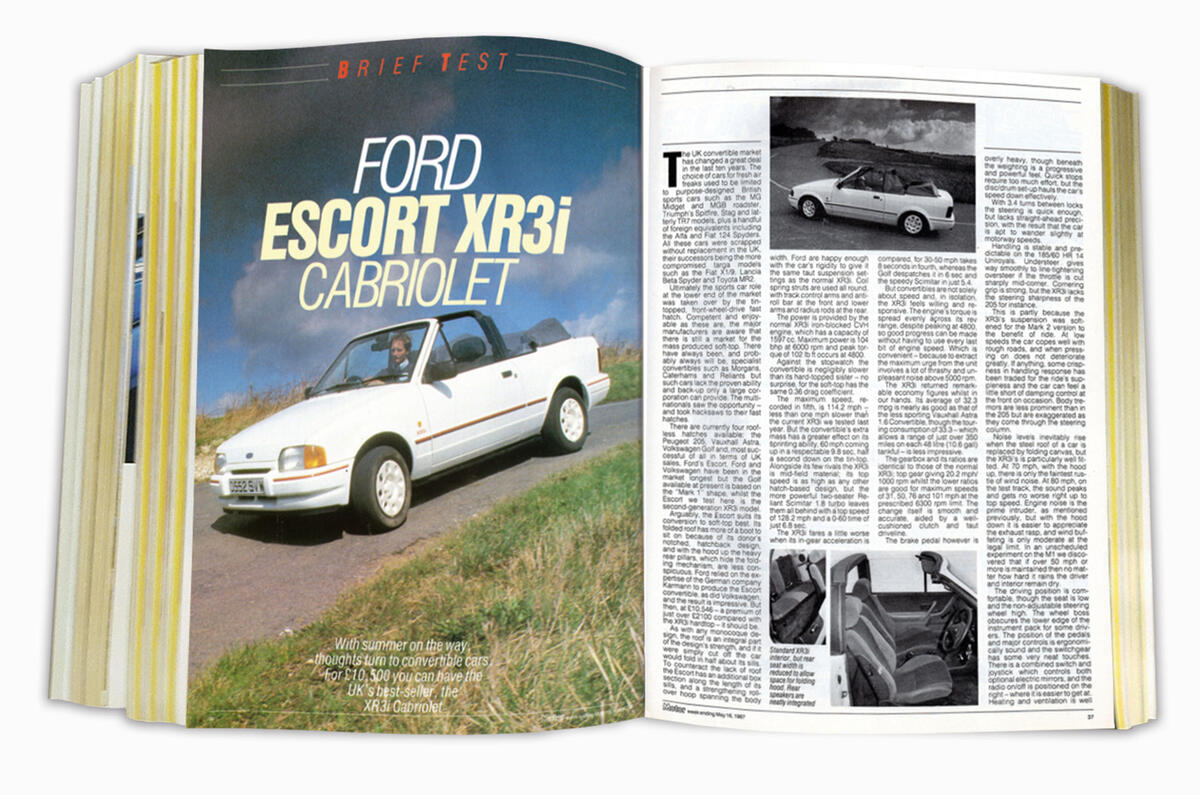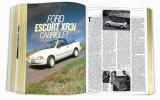The market for convertibles in the UK changed a great deal during the late 1970s and early 1980s. At one time the choice of cars for enthusiasts of fresh-air driving was limited to purpose-designed British sports cars such as the MG Midget and Triumph Spitfire, plus a handful of foreign equivalents, including the Fiat 124 Spider.
Eventually those models were phased out and the role of the accessible sports car at the lower end of the market was taken over by the tin-topped, front-wheel-drive fast hatch. Competent and enjoyable as these were, however, the major manufacturers remained aware that there was still a market for the mass-produced soft-top – and took hacksaws to their fast hatches.
At the time that Autocar’s sister publication, Motor, assessed the Ford Escort XR3i Cabriolet in 1987, it was one of four drop-top hatches on the market, the others being the Peugeot 205, Vauxhall Astra and Volkswagen Golf. Motor pointed out that the Escort suited its conversion best, because “its folding roof has more of a boot to sit on because of its donor’s notched-hatchback design, and with the hood up the heavy rear pillars, which hide the folding mechanism, are less conspicuous”.
Ford relied on the expertise of German company Karmann to produce the Escort Cabriolet. “The result is impressive,” said Motor, “but then, at £10,546 – a premium of more than £2100 compared with the XR3i hard-top – it should be”.
To counteract the absence of a solid roof, the Escort had an additional box section along the length of its sills and a strengthening rollover hoop spanning the body width. “Ford is happy enough with the car’s rigidity to give it the same taut suspension settings as the normal XR3i,” explained Motor.
“At low speeds the car copes well with rough roads and when pressing on does not deteriorate greatly. If anything, some crispness in handling response has been traded for the ride’s suppleness and the car can feel a little short of damping control at the front on occasion. Handling is stable and predictable; cornering grip is strong, but the XR3i lacks the steering sharpness of the 205.”
The 1597cc CVH engine was carried over from the regular XR3i, with peak outputs of 104bhp at 6000rpm and 102lb ft at 4800rpm. Predictably, the convertible’s extra mass meant that its 0-60mph time of 9.8sec was 0.5sec slower than that of the hatch, albeit broadly on a par with its drop-top rivals.
The multi-layer canvas roof was held in place by two catches and was easy to lower and erect. “From the outside, the hood actually looks like a hard-top,” reckoned Motor. “Noise levels inevitably rise when the steel roof of a car is replaced by folding canvas, but the XR3i’s is particularly well fitted. At 70mph, with the hood up, there is only the faintest rustle of wind noise. Wind buffeting is only moderate at the legal speed limit.”








Add your comment